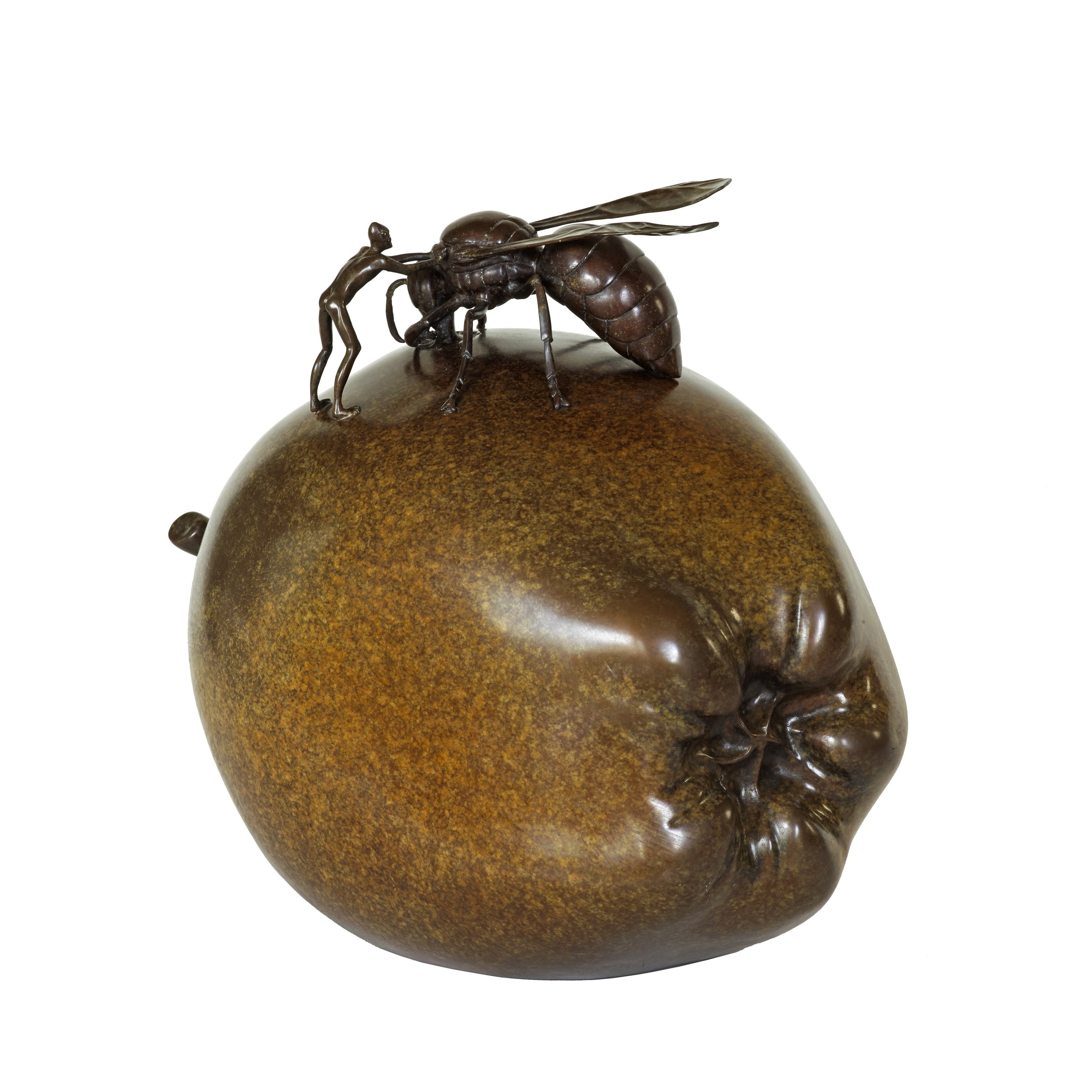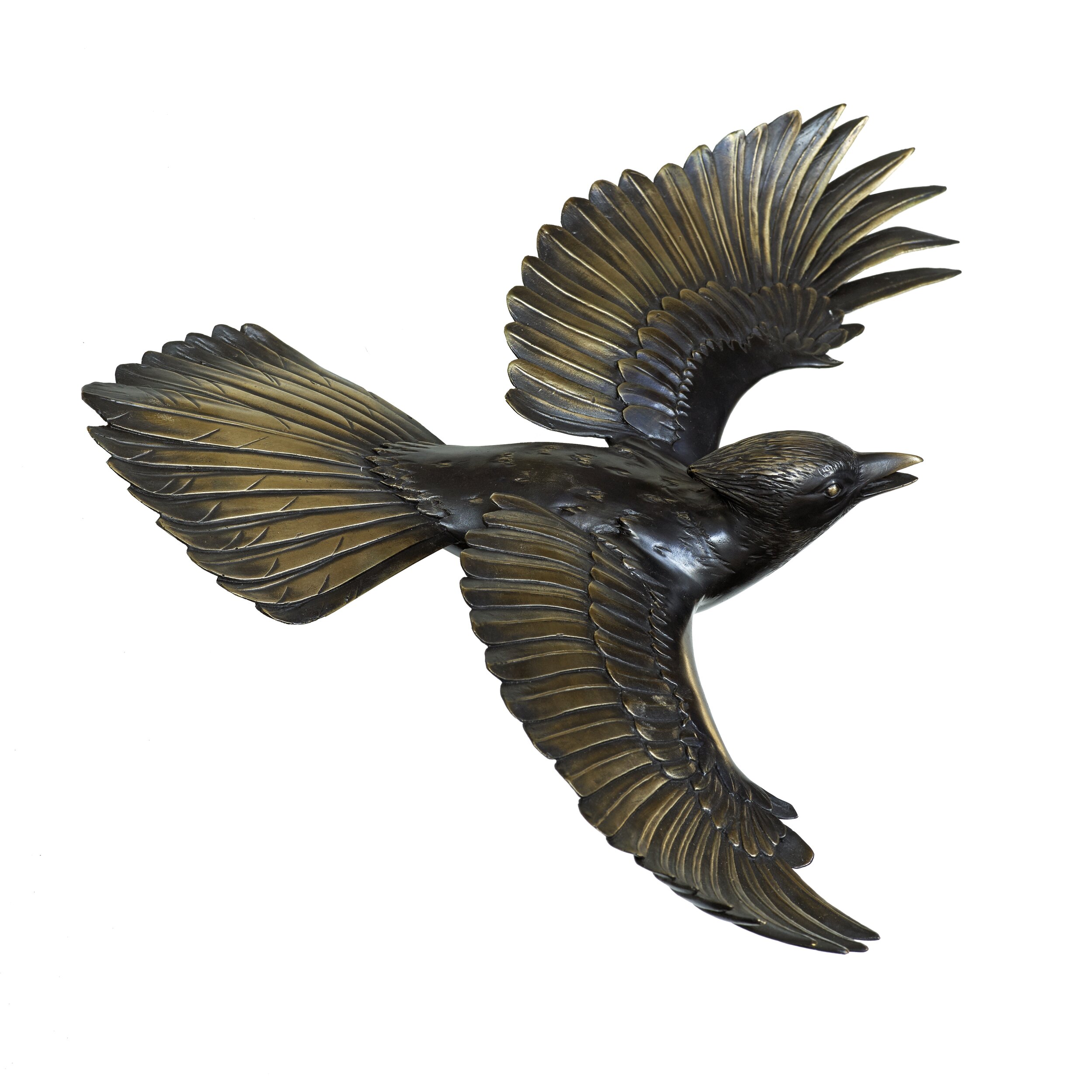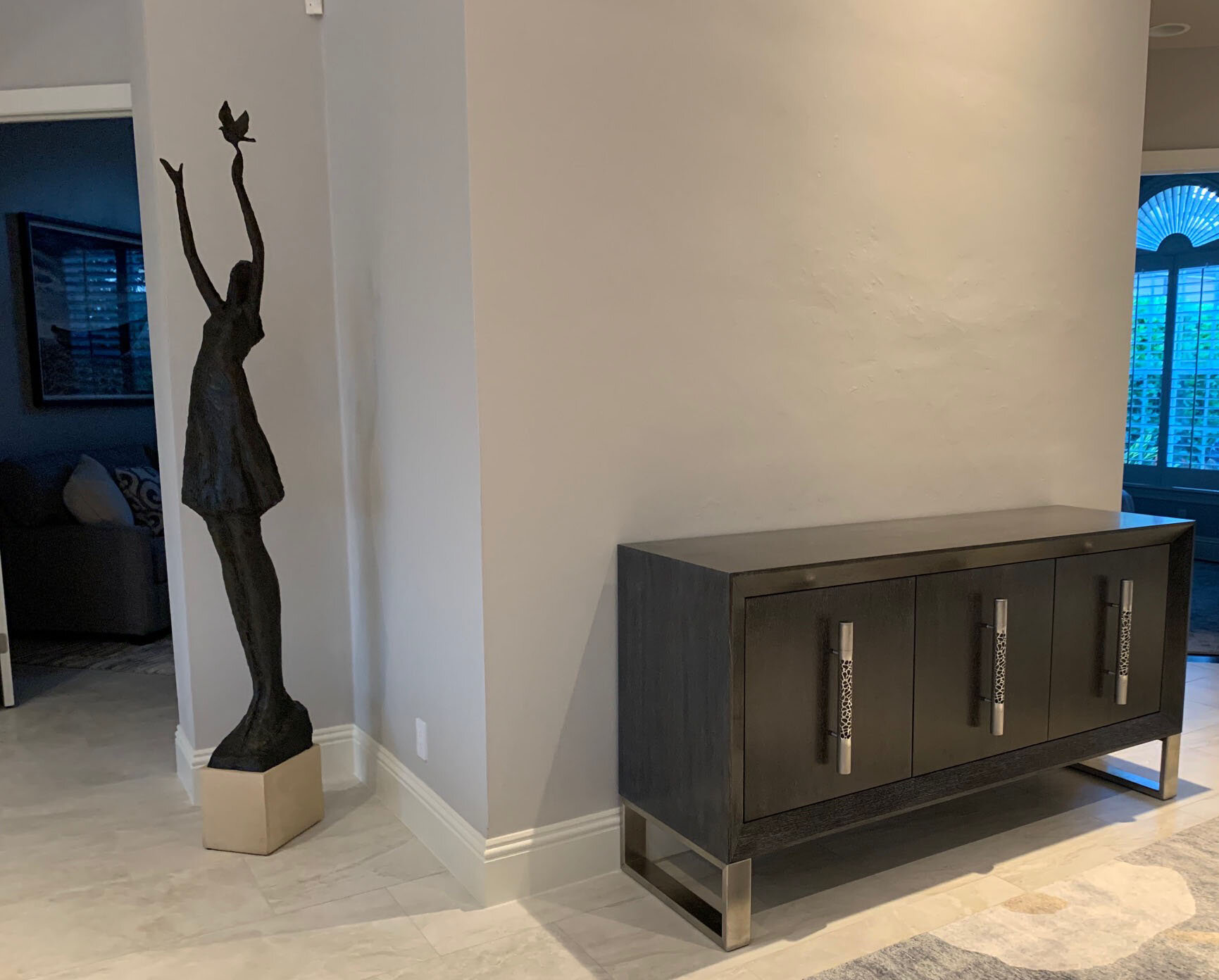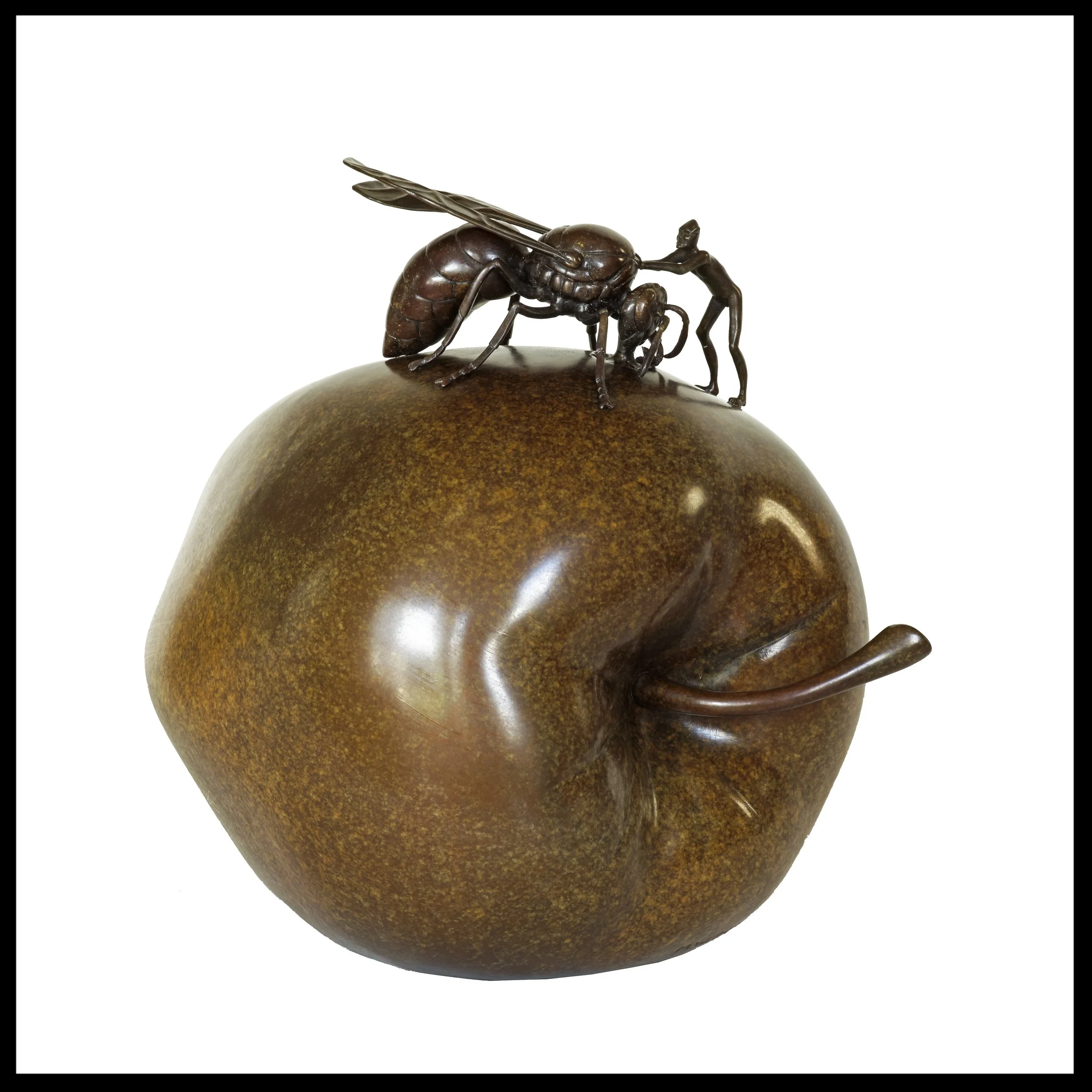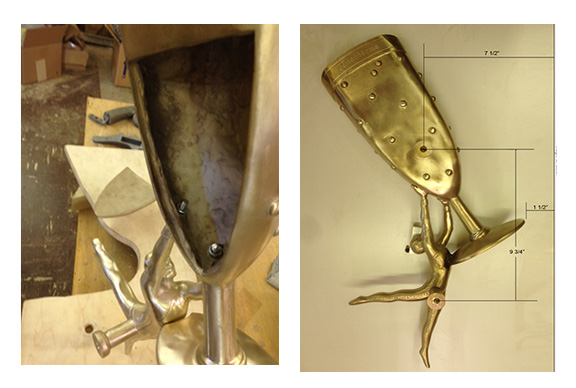Over the years we have shared with our clients and those who enjoy our blog just how much Martin is inspired by nature and where he goes to find that inspiration. This may include hiking trips to local canyons or exotic spots such as our recent trip to Spain or a visit to more formal gardens such as those at the Huntington Library in San Marino or the Botanic Gardens in Santa Barbara. We are always equipped with our camera to snap photos of birds and other creatures and their habitats as well as beautiful flowers and foliage. These visits and corresponding photographs serve as inspiration for future hardware and art projects. For example, this photo of a budding succulent taken on a day trip to the Huntington Library (and hangs on the wall in our home)

served as inspiration for Martin's latest project--a pair of beautiful candlesticks.

Delicate in appearance only, these candlesticks are cast in solid bronze and measure 14" high and 6" wide at the base. They accommodate a "chime" or processional candle with a .5" diameter. This unusual size can be purchased from specialty shops like General Wax in North Hollywood, California. The candlestick shows the succulent just before it flowers with the flower stem serving as the "stem" of the sculpture. The concept was largely based on a succulent similar to those in the Echeveria family of succulents, specifically the 'Black Prince'. You can read more about this plant here.
This candlestick was originally designed for our home and we then gifted a pair to our close friends on their wedding day. We are hoping to use the design to create a larger candle arrangement that will feature a larger central succulent surrounded by small buds and the center piece would use a more standard sized candle. Here are a couple more looks at this exquisite candlestick.


To view our entire collection of architectural hardware please visit our site at www.martinpierce.com.
Designers, please visit our showroom located at :
5433 W. Washington Blvd
Los Angeles CA 90016
Tel: 323 939 5929

